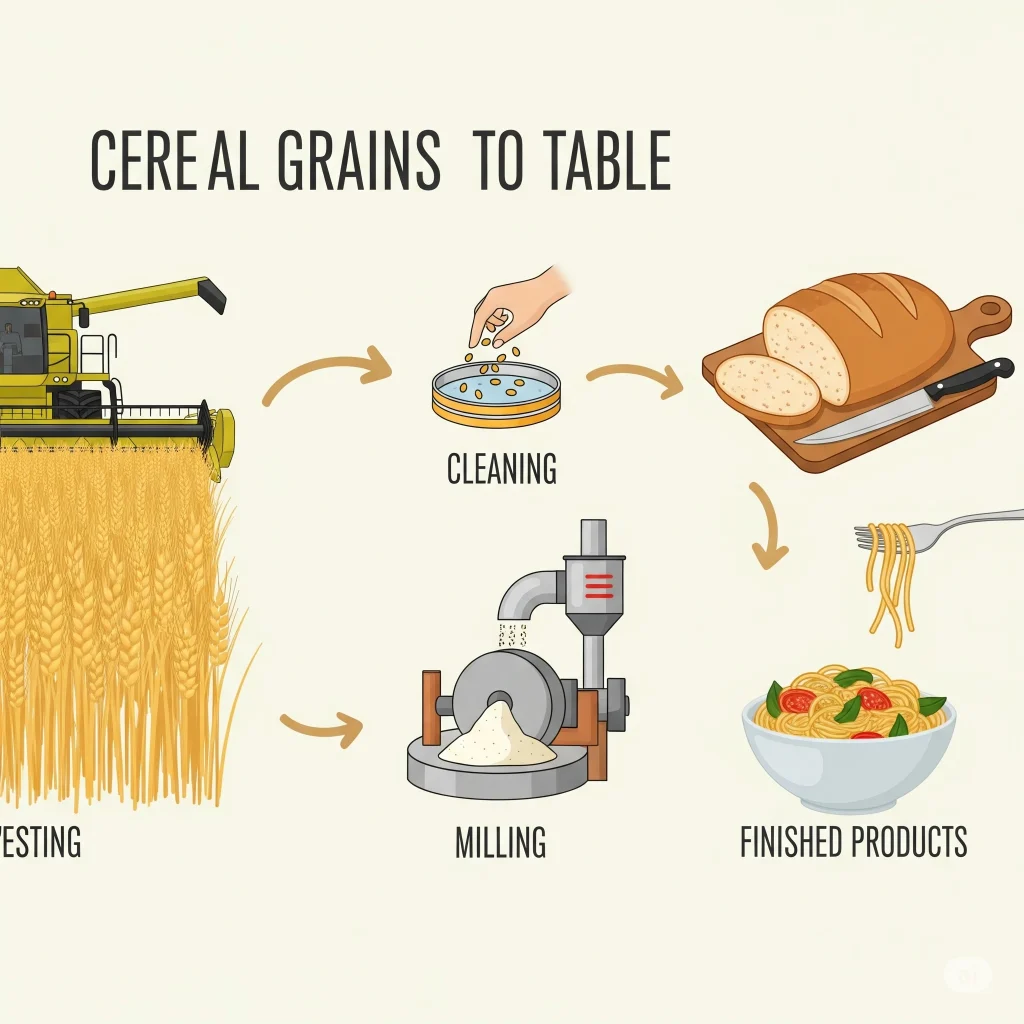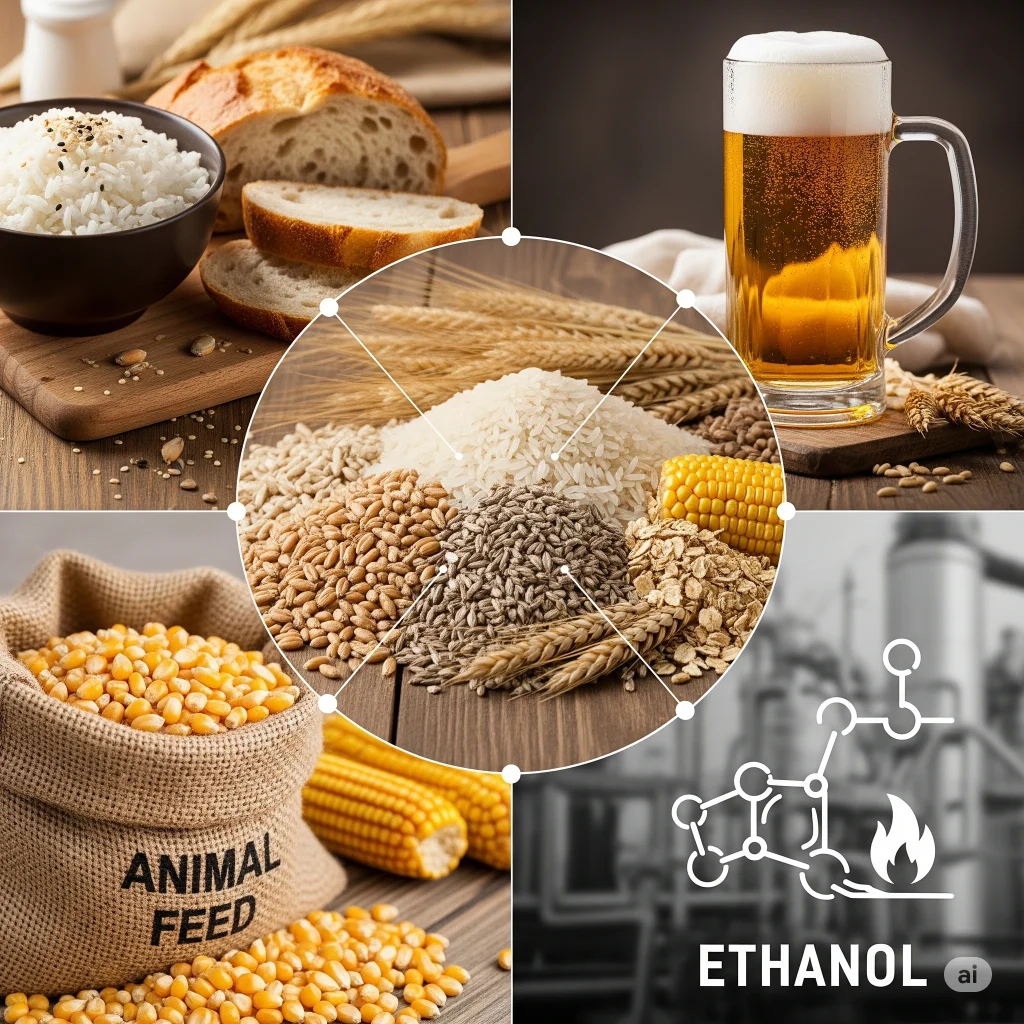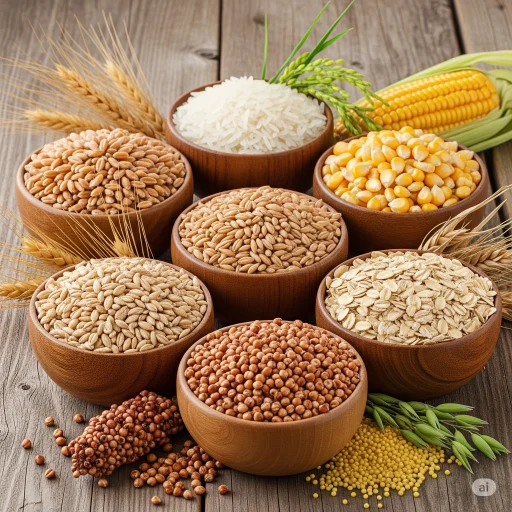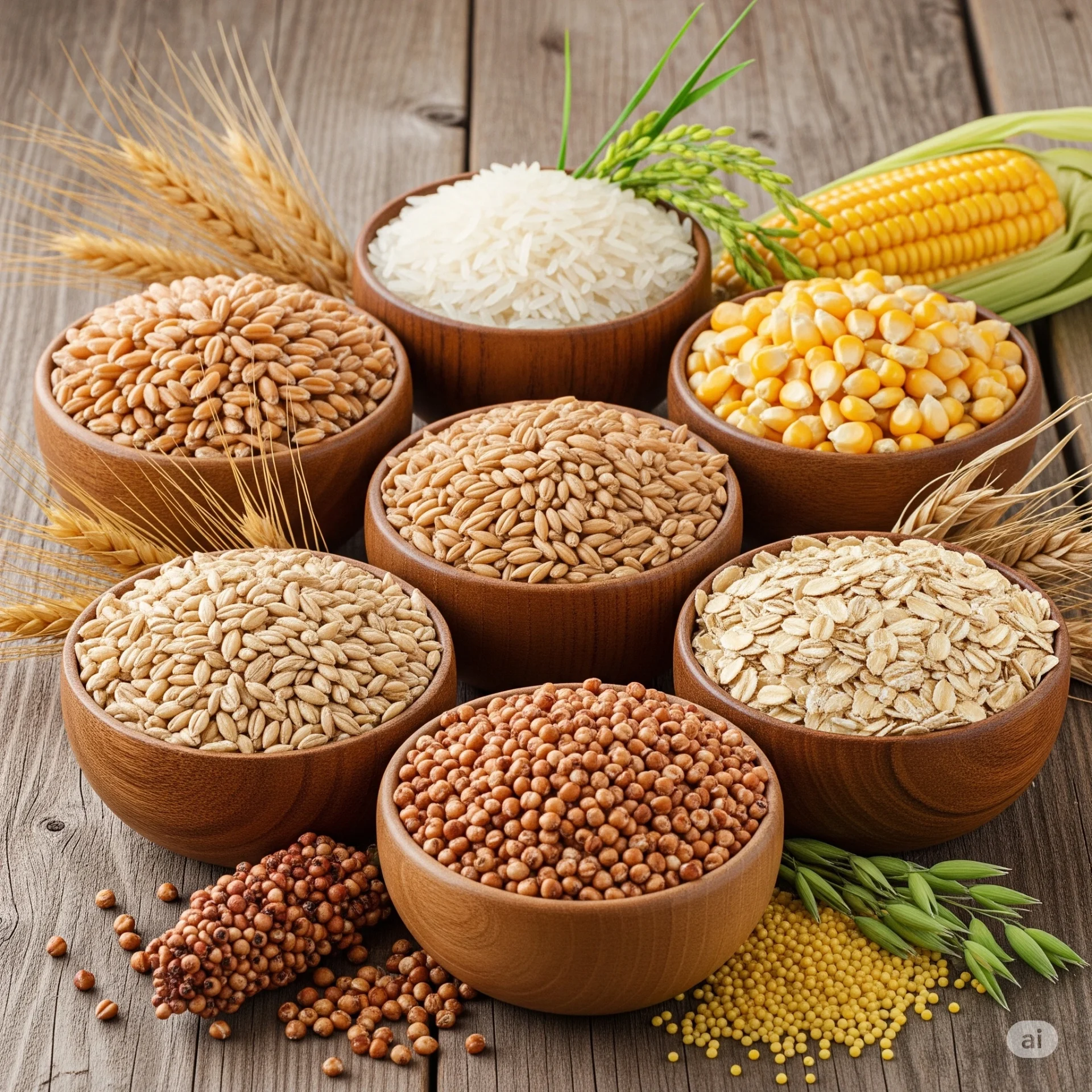Cereal grains are seeds from grass plants. They’re grown by people as food. Since thousands of years, they have been an important part of human diet. After harvesting the grains, they are cleaned, milled, and processed before reaching our homes. These grains are high in carbohydrates which provide us with energy. They also contain vitamins, minerals and fiber.
Cereal grains are important because they can grow in a variety of climates, ranging from hot, dry areas to cool, wet ones. Cereal grains are used to feed billions every day, whether it is a small farmer growing wheat in India or a large farm producing corn in the United States.
Types of cereal grains

There are many different cereal grains, each with their own taste, texture, nutrition, and uses. Here are some of the most important:
| Grain Name | Scientific Name | The Main Growing Regions | Primary Uses |
|---|---|---|---|
| Wheat | Triticum aestivum | India, USA and Russia | Bread, pasta, biscuits, cakes |
| Rice | Oryza Sativa | China, India, Indonesia | Rice, noodles and snacks cooked |
| Maize (Corn). | Zea mays | USA, Brazil, Argentina | Animal feed, cornmeal and popcorn |
| Barley | Hordeum vulgare | Russia, Germany and Canada | Beer, soups and bread |
| Oats | Avena sativa | Canada, USA and Australia | Oatmeal, breakfast cereals |
| Sorghum | Sorghum bicolor | Africa, India and the USA | Porridge, flatbreads and animal feed |
| Millet | Various species | India and Africa | Flatbreads, porridges |
A Closer Look at Each Cereal Grain
Wheat
Wheat is the world’s most important cereal crop. It is cultivated primarily in cooler climates. The wheat grain is milled to produce flour after harvest. For different products, there are different types of flour. Bread requires strong flour that contains more gluten while cakes require soft flour that contains less gluten. Wheat is used for pasta, biscuits, breakfast cereals, and noodles.
Rice
More than half the population of the planet eats rice. It is usually grown in paddy fields that are flooded to control pests and weeds. After harvest, the rice is dried. It can be left whole grain (brown) or polished into white rice. White rice is faster to cook and has a smoother texture. Brown rice contains more vitamins and fiber. Rice can also be used to make rice cakes, puffed rice snacks, and noodles.
Maize (Corn)
So, maize? That’s a rockstar crop. You turn it into popcorn for movie nights, grind it down into cornmeal for cornbread or tortillas (hello, taco Tuesdays), and—get this—industries churn out stuff like corn syrup, starch, and even ethanol from it. Farmers? They grow mountains of the stuff mostly to fatten up livestock—cows, pigs, chickens, you name it. Plus, there’s a maize type for every occasion: sweet corn for fresh snacking, dent for animal chow, flint for those old-school recipes grandma loves.
Want To Know About Which Business Idea Would Be Better For You?
Go Through Our Startup Selector Tool
Barley
It is the oldest grain cultivated. It thrives in cool, dry climates. It has a chewy texture with a nutty taste, making it ideal for soups and stews. The barley malt used in the production of whiskey and beer is also an important ingredient. Barley, unlike wheat, contains less gluten. It’s therefore not suitable for baking breads that need to rise.
Oats
The health benefits of oats are well-known. Beta-glucan is a type of fiber that helps reduce cholesterol. When it comes to oats, people harvest, steam, and flatten them into rolled oats. You eat ‘em as porridge, bake them into cookies, or toss them in granola or muesli. They’re basically breakfast’s secret weapon.
Read More: What Is The Most Profitable Business in India – A Complete Guide To 2025 And Beyond
Sorghum
Sorghum is an extremely hardy grain that can grow in areas of extreme heat and drought where other grains are unable to survive. Porridge, flatbreads and even alcoholic beverages are made from it. Sorghum is an important staple in many African countries. Sorghum is used for animal feed as well as to produce ethanol. The grains of sorghum can be eaten as whole grains, popped up like popcorn or ground into flour.
Millet
Millet is a small grain that includes finger millet and foxtail. These grains are gluten-free and very nutritious. These grains are high in minerals such as iron and magnesium. Meanwhile, millet thrives where water’s scarce, laughing in the face of drought. Folks cook it up as porridge or rotis, and sometimes whip up a fermented drink with it. It’s a lifesaver in places where it barely rains.
Read More: Baby Cereal Food Manufacturing Industry
Nutritional value of cereal Grains
Cereal grains provide energy and important nutrients. Below is a table that shows the approximate nutritional values (per 100g) of cereal grains.
| Grain | Carbohydrates | Protein (g) | Fat (g) | Fiber (g) | Calories |
|---|---|---|---|---|---|
| Wheat | 71 | 13 | 2.5 | 12 | 339 |
| Rice | 79 | 7 | 0.6 | 1.3 | 365 |
| Maize | 74 | 9 | 4.7 | 7.3 | 365 |
| Barley | 73 | 12 | 2.3 | 17 | 354 |
| Oats | 66 | 17 | 6.9 | 10.6 | 389 |
| Sorghum | 72 | 11 | 3.3 | 6.3 | 329 |
| Millet | 73 | 11 | 4.2 | 8.5 | 378 |
Cereal Grains Processing
These are processed in several steps after harvesting before they become food.
- Cleaning – Removes stones, dust and unwanted seeds.
- Dehusking or Hulling – Remove the outer shell of grains such as rice and barley.
- Milling – Grinding grains to flour or meal.
- Polishing – Making rice and barley shiny and smooth by removing the bran.
- Fortification – Adding vitamins and mineral to improve nutritional value.

Uses for Cereal Grains
- Food products – Bread, pasta, porridge, rice dishes, snacks.
- Alcoholic Beverages– Beer, whiskey and rice wine.
- Animal feed – Maize, sorghum, barley.
- Industrial Products Ethanol, biodegradable Plastics, Starch.
Read Our Project: Click Here
The Importance and Use of Cereal Grains
Cereal grains make up a large part of the global trade. Depending on the production and demand, countries export or import large quantities. These industries also create jobs and provide income for millions of farmers.
Read More: Why Rose Farming is a High Demand Business?
Conclusion
Cereal grains form the basis of human nutrition. They are part of daily life around the globe, from wheat bread in Europe to maize tortillas and rice bowls in Asia. Understanding the types, growth, production, and uses of these foods helps us understand how they influence our diets, economies, and cultures.
FAQs About Cereal Grains
Q1: What is the difference between whole grain and refined grain?
Whole grains have all parts—bran, germ, and endosperm. So, they’ve got more fiber and nutrients. Refined grains? Most of that’s gone. They’re softer but not as healthy.
Q2: Which cereal grain has the most protein?
Oats win for protein. About 17 grams in 100 grams. Pretty good for a breakfast food.
Q3: Why are cereal grains important in our diet?
They’re cheap, give you energy, and last a long time. People all over the world eat them every day.
Q4: Can you be allergic to grains?
Yep. Some folks can’t have wheat or corn. Good news—there’s rice, quinoa, and millet as other choices.
Q5: How long can cereal grains be stored?
If you keep them dry and sealed, usually 6 months to a year. In big storage, sometimes even longer.
Q6: Are millets better than rice and wheat?
Millets have more fiber and minerals. They grow well in dry places. The taste and how you cook them is a bit different, but they’re healthy.







